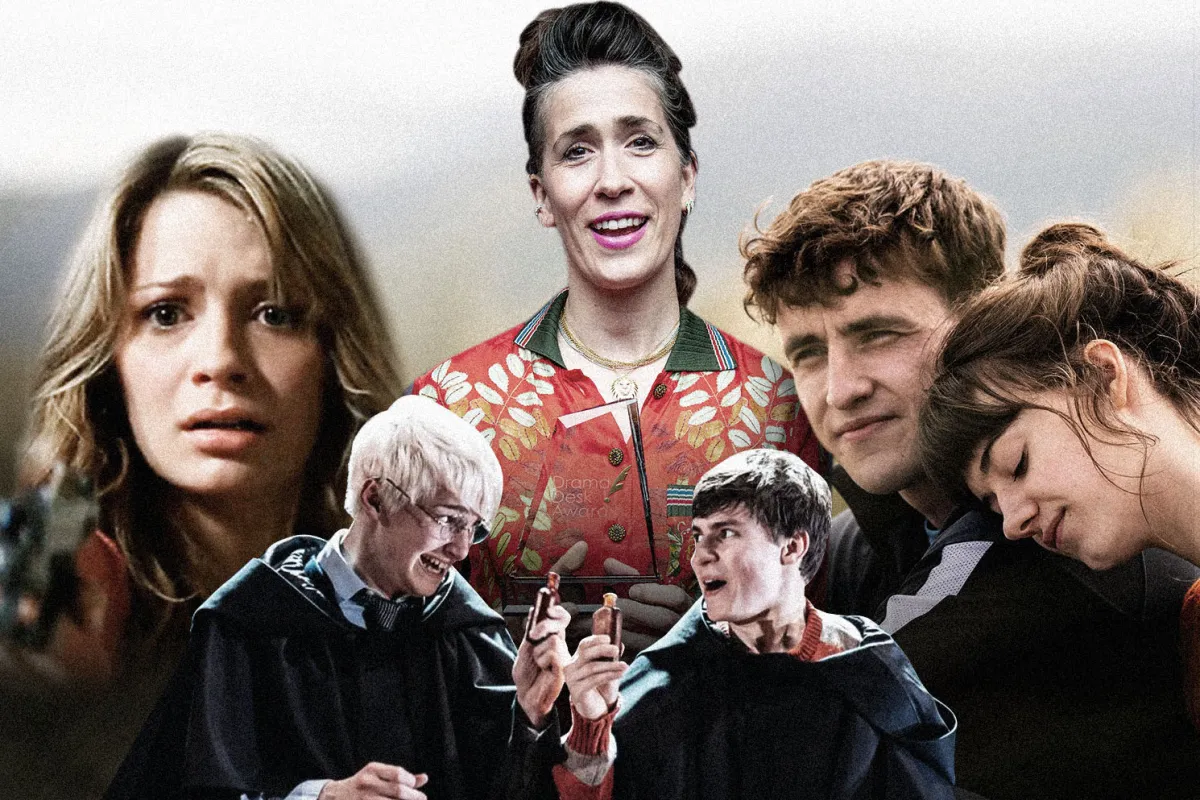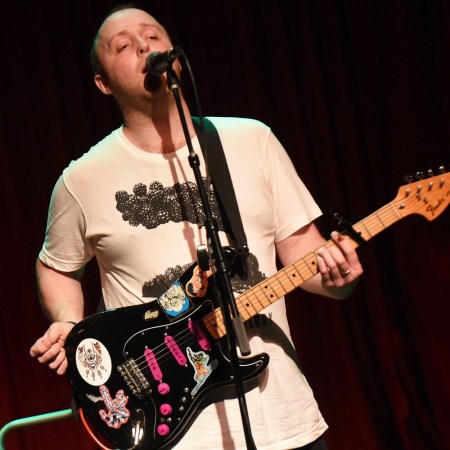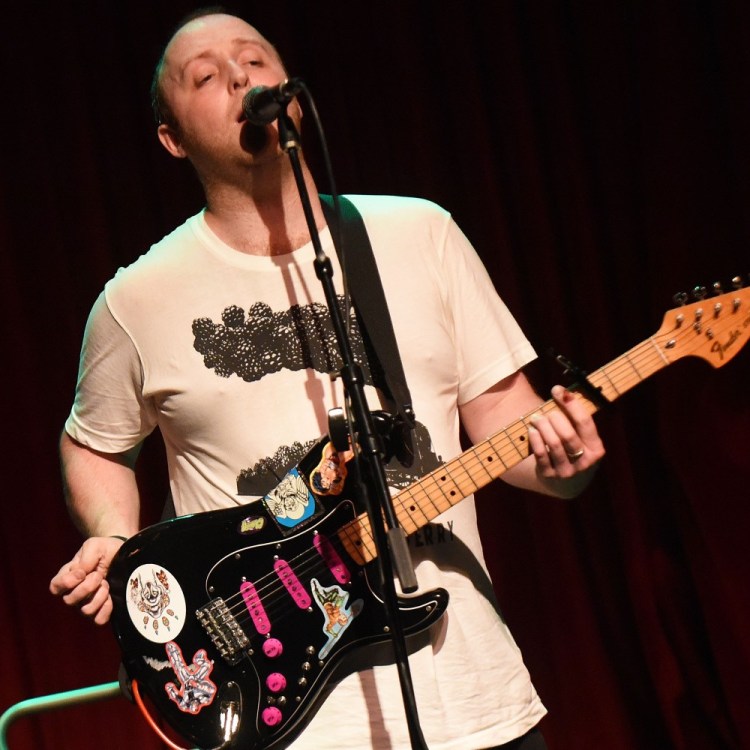There are three events that can credibly be called “the shot heard round the world.”
The first was the beginning of the Revolutionary War, the second was the one that felled the Archduke Franz Ferdinand in the preface to WWI, and the third arrived in the Season Two finale of The O.C., when Marissa shot Ryan’s brother Trey to the tune of Imogen Heap’s “Hide and Seek.”
Since that night 15 years ago — the episode premiered on May 19, 2005 — Heap’s self-harmonized, vocoder-infused masterwork has been given the meme treatment by Saturday Night Live, the Billboard Hot 100 treatment by Jason Derulo and even the Broadway treatment in Harry Potter and the Cursed Child. But it’s the song’s placement in Normal People, a new 12-part TV adaptation of the Sally Rooney novel, that has ripped open old wounds, sparked debates about musical baggage and posed the question: Can “Hide and Seek” escape its iconic origins to become something more?
To connect the dots across time, we got in touch with Maggie Phillips, music supervisor on Normal People, as well as Norman Buckley, who worked as a director and editor on The O.C., a job that included editing the Season Two finale, “The Dearly Beloved.”
“When I was editing The O.C., I was given Imogen Heap’s album Speak for Yourself by music supervisor Alex Patsavas at the beginning of Season Two — it may have even been before the album’s release,” Buckley told InsideHook via email. “I loved the entire album and thought her voice was unique. I suggested to The O.C. creator Josh Schwartz that he listen to the album, as I wanted to use a song called ‘Goodnight and Go’ in Episode Five of the second season (which we did). ‘Hide and Seek’ was on the same album.”
It’s the song’s association with the beloved teen soap that has ostensibly irked both fans of The O.C. and of Normal People’s source material. Less than a week after the latter show premiered, The Cut did what The Cut does, asking, “What Is *That* Song Doing in Normal People?” Another blog said “Hide and Seek” “belongs” to The O.C. As for Maggie Phillips, when asked if there were factions on the creative team fighting for or against the song’s use in the new Hulu and BBC series, she skips the pretense.
“Yes, I was against it. I couldn’t separate it from its previous placements,” Phillips said, citing both The O.C. and the SNL Digital Short “The Shooting” that parodies it, a skit better known as “Dear Sister.”
When you peek under the surface of this debate, it’s the memeification, not the song’s use in The O.C. alone, that makes it hard for people to shed their baggage. Even in the brutal, unforgiving world of memes, the treatment of Imogen Heap’s creation has been particularly difficult to watch for fans of the original material, with The Lonely Island’s SNL parody inspiring every manner of emotion-draining derivative, from viral Disney villain death supercuts to the regrettable take from The Ringer that “Hide and Seek”-ing is the new Rickrolling.
So what made Normal People decide to include the song, especially in one of the first radically intimate scenes between the show’s main characters, Marianne and Connell, knowing full well they’d be battling uphill against the legacy of Mischa Barton and Andy Samberg?
“I fought hard to replace [‘Hide and Seek’], but it had been in the cut even before I was brought in, and people had grown very attached,” Phillips explained. “People” in this context most importantly refers to one man, Lenny Abrahamson, who directed the first six episodes of the series. Despite saying in an interview she listened to “500 songs” to replace it, Phillips gave in because it “did what Lenny wanted it to do.”
In short, Abramson knew he wanted “Hide and Seek” for this moment, and he wasn’t going to hear otherwise. Oddly, that gut feeling surrounding Heap’s music isn’t unique; it’s a moment of creative déjà vu that echoes throughout the song’s life.
Buckley noted that “Josh [Schwartz] responded to ‘Hide and Seek’ as soon as he heard it and felt that he wanted to find a place to use it during the second season.” Even in Harry Potter and the Cursed Child — the two-part play that takes place after J.K. Rowling’s original books, for which Imogen Heap eventually came on as composer — it all went back to that one song.
In liner notes for the Cursed Child album, the play’s director John Tiffany wrote, “‘Hide and Seek’ … has always struck me as having a religious quality. I knew that if we placed a version of it at the right moment in the story it could be very powerful — and that turned out to be an understatement.” But, as Heap told Vulture, it was the show’s movement director, Steven Hoggett, who first introduced her music into the show during very early rehearsals, and there it stayed.
In the same Vulture interview, Heap relayed her initial hesitation about including the song; because it’s the only time lyrics are used in the five-plus-hour production, she was worried about it detracting from the world being created onstage. In the end, she was convinced partly because she doesn’t sing in the play’s version, “Edge of the Forest,” and partly because she feels the original song is part of an “era in time” that brings viewers back to the release of the Harry Potter books and movies — back to 2005.
However, that doesn’t explain why the song has resonated with viewers of Normal People, a show that admittedly begins only a few years after 2005, but is lightyears ahead of the aughts in its weaving of fraught issues of sex and class into a zeitgeist-capturing phenomenon.
More likely, the “era in time” captured by “Hide and Seek” is not one affixed to any calendar, but to that time of adolescent uprooting — call it teen angst, if you must — that every human being experiences, a time that transcends the year, the societal norms of the decade, even economic, religious and racial boundaries. That connection is obvious in these TV shows as they begin in high school, but it extends to Cursed Child, where the offspring of Harry Potter and Draco Malfoy desperately try to escape the shadow of their parents, and even Jason Derulo’s multi-platinum “Whatcha Say,” which was released when the pop star was just 19 years old and was inspired by his brother’s relationship troubles.
“I find it funny because I’m like this middle class white girl, but I think it’s really amazing that [my music] can have this life and touch different spaces with different energies,” Heap told The Fader in 2018 when asked about her music’s influence on everyone from Young L to Lil B to Ariana Grande. “I feel like there’s a bit of magic there, too.”
Of course, “Hide and Seek” does seem to have more than a bit of magic itself, which goes all the way back to the song’s composition, a musical origin story to rival other timeless classics like “(I Can’t Get No) Satisfaction,” but one that seems to have gotten lost amid the memes.
“It was about three in the morning … I had an idea of this hide-and-seek thing, I liked the childhood reference and I wanted to write a song about that. So when I was kind of stream-of-consciousness singing along to myself playing the piano-keyboard-thing, this whole song, all four and a half minutes of it, just arrived from start to finish in that four and a half minutes. All the lyrics weren’t there because lyrics are like pulling teeth with me. And right at the end you can actually hear the local train going by the window, because my studio’s right next to a busy train line,” she told WXPN in 2006.
“I went home and I played it to my boyfriend — he’s kind of tattoos and bleach blond hair and six-foot-four — and he started crying when he heard it. So I was like, hm, there may be something in this song.”
It wouldn’t be surprising to learn that Schwartz, Derulo, Hoggett or Abrahamson also shed tears when they first heard the song. But as Heap notes, the memorable lyrics — from the opening “Where are we?” to “crop circles in the carpet” to the gunshot-triggering chorus — weren’t all there when she made her boyfriend weep. So the power, the timelessness of the song, then, lies beyond the “mmm whatcha say.” It lies in the music.
When asked how the process of choosing songs for Normal People differed from other projects, Phillips said, “In this instance, I spent most of my time trying to remember what my first love and first heartbreak felt like. The feelings are so strong, nothing is diluted from experience or time. I didn’t want the music to feel detached. I wanted the songs to feel imitate and sincere … as real and as intense as the emotions they were experiencing.”
Personally, being both a longtime fan of The O.C. and an evangelist of Rooney’s novel, I couldn’t help but tear up when the camera slowly zooms in on Marianne and Connell in each other’s arms in the outskirts of Sligo, Ireland, in Episode Two of Normal People while Heap sings “spin me round again.” I didn’t picture southern California or the Forbidden Forest or a house party in 2010, I was strung tight to the moment, and it’s one of the images that stuck with me after finishing the series.
When asked what makes a song timeless, Phillips wrote, “A strong melody and vocals that come from the heart.” When asked about the practice of reusing potentially baggage-laden songs, Buckley explained, “I love the idea of returning to a song that has had a cultural impact … You are bringing something familiar to the audience but defining it in a new way.”
While many, even the composer herself, were ready to file the song away under 2005, it appears the definition of “Hide and Seek” is just beginning to take shape.
This article was featured in the InsideHook newsletter. Sign up now.























